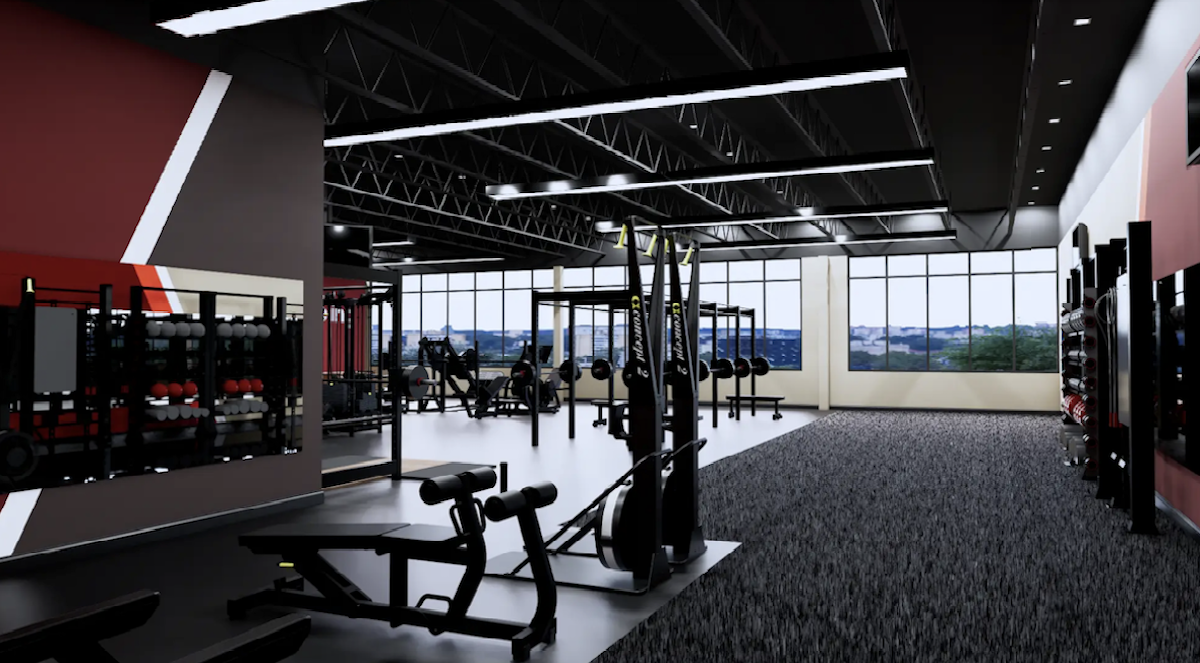Jobs
Female students learn welding at Job Corps

Ben Pifher/ MDN
Female welding students learning their chosen trade at the Quentin N. Burdick Job Corps Center in Minot are Dana Johnston, Dulce Ortiz, Kaila Babb and Jamie Lambert.
The Quentin N. Burdick Job Corps Center in Minot is a place where young people can get a jump-start on life working in their choice of several industries.
Last week, a group of the female welding students took time from their studies to speak about their experiences at the center.
Each of the students has been at Job Corps for about one year, except for Dana Johnston, who said she had been at the center for six or seven months.
According to Dulce Ortiz, one of the student leaders, the curriculum for the welding program takes at least six months, but that time depends on how much high school a student has completed before beginning the program. Each trade takes different lengths of time to become skilled enough to gain certification, according to Job Corps staff.
So far, these students had only done stick welding, a form of welding in which a fixed electrode is held by the operator, and they “sew” metal together by superheating it with electricity flowing from the electrode into the object being welded.
Other forms of welding include TIG welding, in which a feeding rod is held in one hand to be consumed and fed into the joint of two work pieces, and MIG welding, in which the operator holds a “gun” that feeds everything needed to make a weld into the work space. There are other specialized disciplines of welding not taught at Job Corps.
The curriculum is self-paced, with certain milestones to be reached. The students must demonstrate competence at certain tasks to meet milestones and progress.
“It depends on the skills that you have,” Ortiz said of reaching milestones.
The students said they aren’t all at the same milestone in their training. They get breaks throughout the day, so they get to socialize and see how each other’s progress is going.
“You work until you’re confident you can pass,” Ortiz said. “Then the instructor will test your welds and tell you if you are eligible to pass.” Welds the students submit for testing are bent aggressively to see if they can hold. If they are sufficient, the student progresses.
Johnston, giving a tour of the welding shop, said much of the time in the shop is spent preparing practice plates, on which they practice welding joints. The students must cut and bevel plates to set them up as test pieces. The students said a lot of welding happens but also a lot of grinding when they start learning.
“Grinding makes your hands tired and can take a while,” said Johnston, who told how she likes to set up a few plates to weld at a time so she can take breaks from individual tasks and work through the practice pieces.
Ortiz pointed out a large CNC plasma cutter, and Johnston and the other students showed it off, pointing out features of the machine. The machine is a computer-operated, sheet metal cutting torch that can cut any shape imaginable and gives the students a leg up in their learning. The machine will save valuable time in training by being able to cut up metal sheets with mere supervision. It will also save the students hours of labor.
“We are still learning it and figuring it out. We just got it,” Johnston said.
A full round of affirmation met questions about enjoying the Job Corps.
“It’s not so bad,” said Kaila Babb, another student, while variations of “yes” echoed around the group.
“It’s better than high school,” said Jamie Lambert.
Ortiz said she wants to work at Bobcat in Bismarck and gain experience, then she ultimately wants to open her own shop. Dana Johnston said she would like to work jobs through a union and eventually become an instructor. Kaila Babb is planning on either taking a shop job or working for her dad’s company as a welder.
“To be honest, I think if female welders want to come into the welding trade they should definitely do it. It’s challenging sometimes, but it’s definitely worth it,” Johnston said.
She and Ortiz said it can be a bit of a struggle trying to prove themselves in a male-dominated trade, but they said they can weld as well as their male counterparts.
Each of the students was proud of her accomplishments, and each nodded in agreement when Ortiz said, “I had no experience when I came here, but after having my instructor show me what to do and having my peers help me along, coming to Job Corps has made me feel comfortable doing something I’ve never done before.”
“You’ve got to worry about what goes on in the booth. That’s all that matters. Just pay attention to what goes on in there, and who cares about the outside world,” Ortiz said.
Job Corps celebrates 60 years
This year is the 60th anniversary for Job Corps in the United States.
Job Corps is the U.S. Department of Labor’s largest training program, serving more than 50,000 students annually. Established as part of President Lyndon B. Johnson’s Economic Opportunity Act on Aug. 20, 1964, Job Corps has since expanded to include more than 120 centers, including the Quentin N. Burdick center in Minot.
“Since its inception, Job Corps’ mission has been, and continues to be, changing lives through good jobs,” said Assistant Secretary of Labor Jose Javier Rodriguez. “The 60th anniversary is a significant milestone to honor the past and look forward to the next 60 years of creating opportunities and career paths for young adults across the country.”
-
Ben Pifher/ MDN
Dulce Ortiz, a student, is in the welding shop at the Quentin N. Burdick Job Corps Center in Minot.
-
Ben Pifher/ MDN
Female welding students learning their chosen trade at the Quentin N. Burdick Job Corps Center in Minot are Dana Johnston, Dulce Ortiz, Kaila Babb and Jamie Lambert.
- U.S. Air Force Master Sgt. Christina Lee, recipient of the Federally Employed Women’s (FEW) 2024 Meritorious Service Award, poses for a portrait at Minot Air Force Base, North Dakota, August 23, 2024. The FEW Military Meritorious Award Program recognizes a maximum of six exceptional military service members; one for each service branch. The purpose of FEW’s Military Meritorious Service Awards is to recognize outstanding military service members within the Armed Forces who have distinguished themselves with significant contributions to their service. One of the accomplishments that earned Lee the award was founding the Female Defender Initiative at Minot AFB, the first of its kind across two bases. (U.S. Air Force photo illustration by A1C Luis Gomez) (This image was created using multiple exposure techniques)
-
Submitted Photo
Airmen assigned to the 5th Medical Group operate a triage center during a major accident response exercise (MARE) at Minot Air Force Base on Aug. 21. MAREs provide realistic, hands-on training scenarios for first responders and enhance operational readiness in the event of a real-world incident. U.S. Air Force photo by Senior Airman Kyle Wilson.











